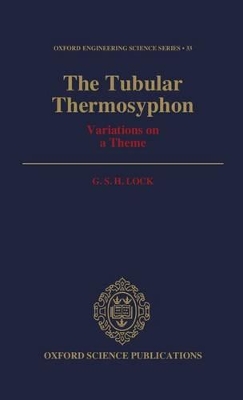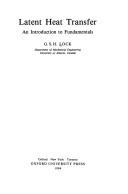Oxford Engineering Science
2 primary works
Book 33
The tubular thermosyphon is a very simple idea for transferring heat. Fluid inside a tube is circulated by buoyancy forces and thus carries thermal energy from the hot end to the cold end with great efficiency. The device has many uses: freezing ground, cooling equipment and machinery, waste heat recovery, and energy conservation.
The operating details of the thermosyphon are, however, very complex and change dramatically with the circumstances. The length and diameter of the tube, the nature and state of the fluid, the strength and variation of the body force field, etc., all influence the internal circulation pattern and thus create different operating characteristics - variations on a basic theme. The book deals with each of these variations thoroughly and systematically. Emphasis is placed on the physical
principles underlying thermal behaviour: under single-phase or evaporative conditions; whether the tube is stationary or rotating; and whether it is straight or bent. Consideration is also given to other devices having a similar purpose.
The operating details of the thermosyphon are, however, very complex and change dramatically with the circumstances. The length and diameter of the tube, the nature and state of the fluid, the strength and variation of the body force field, etc., all influence the internal circulation pattern and thus create different operating characteristics - variations on a basic theme. The book deals with each of these variations thoroughly and systematically. Emphasis is placed on the physical
principles underlying thermal behaviour: under single-phase or evaporative conditions; whether the tube is stationary or rotating; and whether it is straight or bent. Consideration is also given to other devices having a similar purpose.
Book 43
This is a book which treats latent heat transfer comprehensively. It is designed for engineering graduate students who will later be required to work in industrial or environmental settings where latent heat transfer is important. The book provides a fundamental treatment of such topics as boiling, condensation, melting, and solidification.

